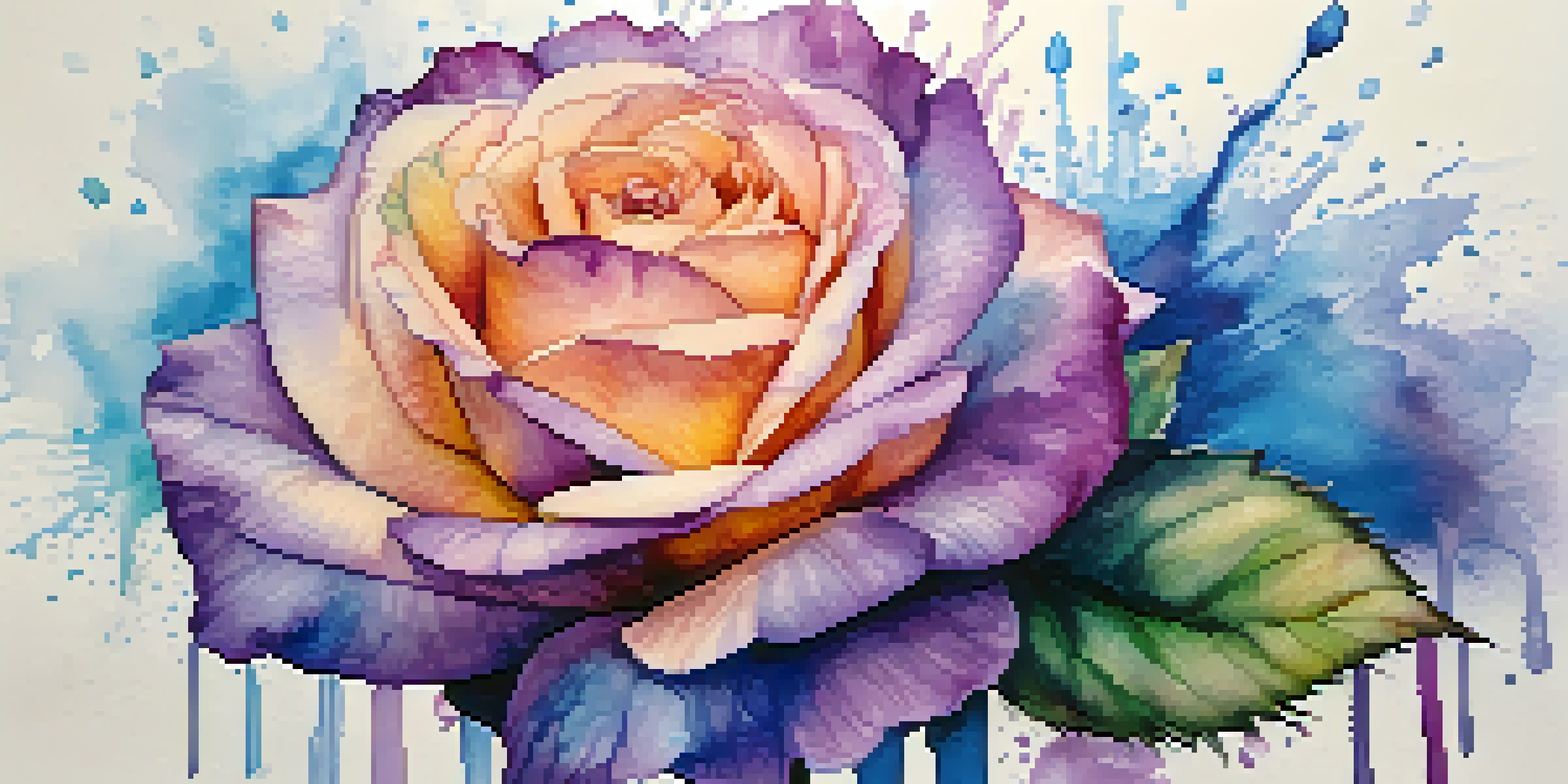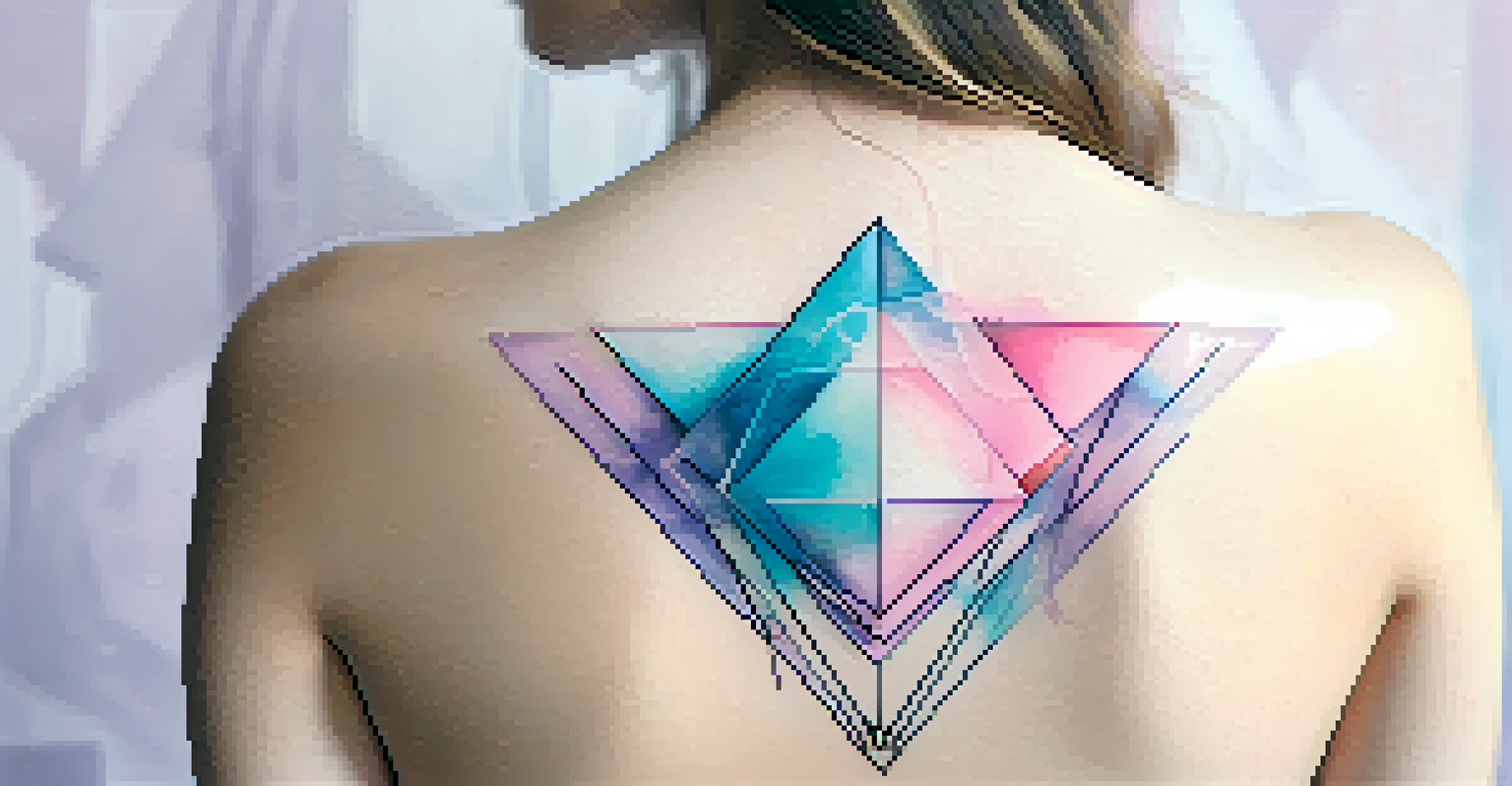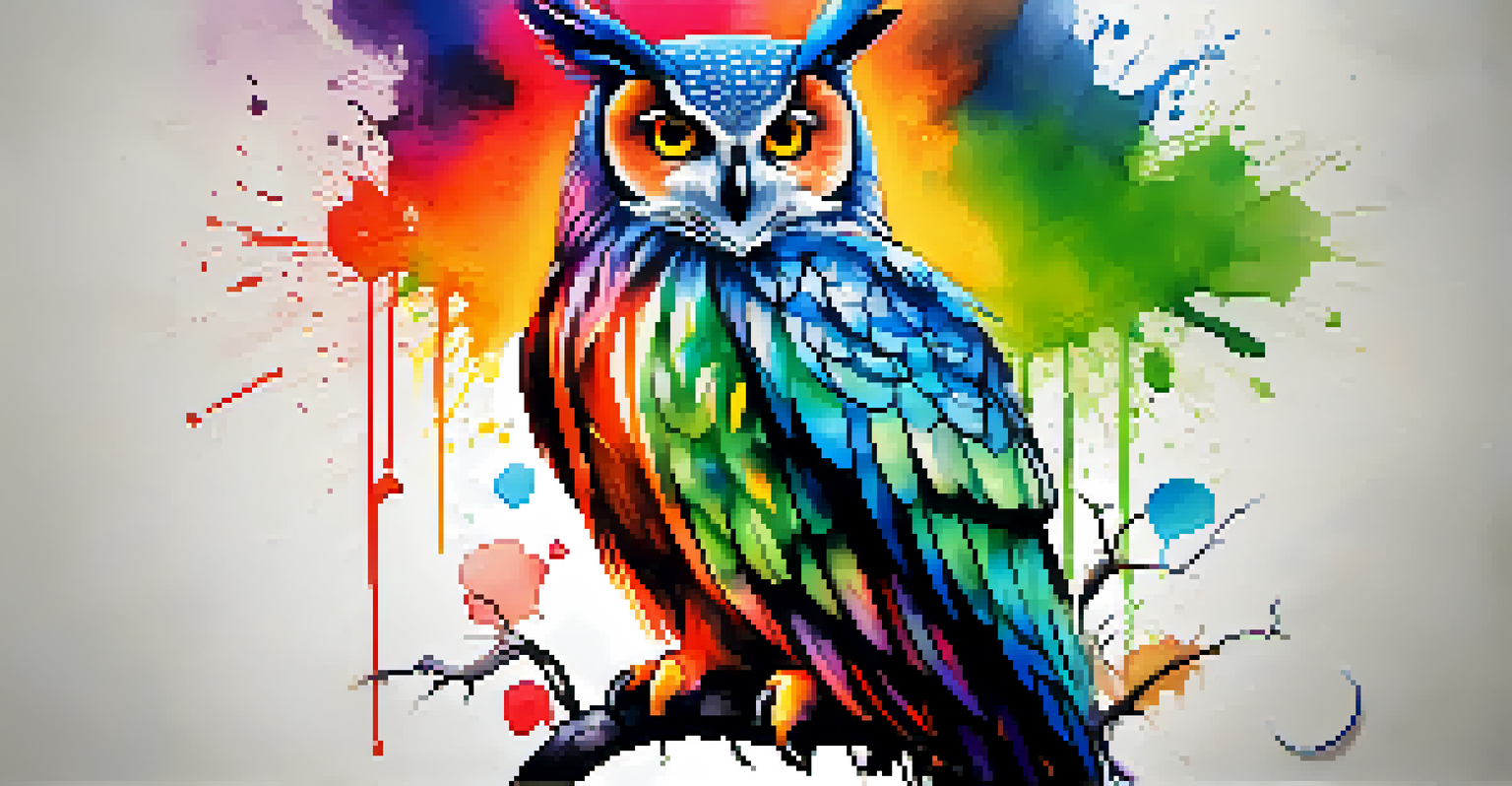Watercolor Tattoo Designs: Techniques for Vibrant Art

Understanding Watercolor Tattoo Art and Its Appeal
Watercolor tattoos have taken the body art scene by storm, captivating enthusiasts with their vibrant colors and fluid designs. Unlike traditional tattoos, which often rely on defined lines and shading, watercolor tattoos mimic the look of a watercolor painting on skin. This style allows for a unique expression of creativity, turning the body into a canvas that showcases stunning artwork.
Tattoos are a way of keeping memories alive, and watercolor tattoos allow for those memories to be painted in vibrant colors.
The appeal of watercolor tattoos lies in their ethereal quality. They often resemble splashes of paint, creating an impressionistic effect that can be both bold and delicate. Many people are drawn to this style because it offers a fresh take on tattooing, allowing for a more organic and less rigid appearance than typical designs.
Additionally, watercolor tattoos hold personal significance for many individuals. They can represent emotions, memories, or even nature, making them deeply meaningful. As such, these tattoos are not just about aesthetics; they embody a story or sentiment that resonates with the wearer.
Popular Themes in Watercolor Tattoo Designs
When it comes to watercolor tattoos, certain themes have emerged as crowd favorites. Floral designs are particularly popular, as the vibrant colors and soft edges of flowers lend themselves beautifully to this art style. Roses, lotus flowers, and wildflowers often come to life with the fluidity of watercolor, creating a stunning visual impact.

Another popular theme is nature, where elements like landscapes, animals, and celestial bodies are depicted with a splash of color. For example, a watercolor tattoo of a colorful owl can evoke a sense of wisdom and mystery, while a sunset scene can capture the essence of tranquility. These designs not only reflect personal interests but also an appreciation for the beauty of the natural world.
Watercolor Tattoos: A Unique Art Form
Watercolor tattoos stand out with their vibrant colors and fluid designs, offering a fresh take on traditional body art.
Additionally, abstract designs have gained traction in the watercolor tattoo realm. These tattoos often feature splashes of color, geometric shapes, or freeform strokes that create a modern, artistic look. This theme allows for immense creativity, enabling artists and wearers to collaborate on unique pieces that defy traditional boundaries.
Techniques to Achieve Vibrant Watercolor Tattoos
Achieving vibrant watercolor tattoos requires a specific set of techniques that differ from traditional tattooing. One key technique is the use of lighter inks that blend seamlessly, mimicking the transparency of watercolor paint. Artists often layer these inks, gradually building up the color intensity to create a beautiful gradient effect.
Art is not freedom from discipline, but disciplined freedom.
Another technique involves the use of negative space, which is the uninked areas of the tattoo that allow the skin's natural tone to shine through. This technique enhances the watercolor effect by creating a contrast that gives the design depth and dimension. It’s similar to leaving areas blank in a painting to make certain colors pop.
Moreover, skilled artists may utilize a stippling technique, where tiny dots of ink are applied to create texture and depth. This approach can add a unique flair to the tattoo, making it appear more like a work of art. The combination of these techniques results in a stunning, one-of-a-kind piece that truly stands out.
Choosing the Right Tattoo Artist for Watercolor Designs
Selecting the right tattoo artist is crucial when it comes to watercolor designs. Not all artists specialize in watercolor techniques, so it's essential to do your research. Look for portfolios that showcase previous watercolor tattoos to ensure the artist has experience in this particular style.
Additionally, communication is key. Discuss your ideas and vision with the artist to gauge their understanding of watercolor techniques. A good artist will be able to offer suggestions and modifications that enhance your original concept, ensuring the final design is both vibrant and meaningful.
Choosing the Right Artist Matters
Selecting an experienced tattoo artist is crucial for achieving the desired watercolor effect and ensuring a meaningful design.
Lastly, consider visiting the studio to get a feel for the environment and hygiene standards. A professional atmosphere can help put your mind at ease and ensure that you’re making a safe choice for your tattoo experience.
Caring for Your Watercolor Tattoo Post-Application
Proper aftercare is essential for maintaining the vibrancy of your watercolor tattoo. Immediately after getting inked, your artist will provide instructions, which typically include keeping the tattoo clean and moisturized. Gently wash the area with mild soap and water, then pat it dry with a clean towel.
It's important to apply a fragrance-free healing ointment to keep the skin hydrated. This step helps prevent scabbing, which can dull the colors of your tattoo. Avoid exposing the tattoo to direct sunlight or soaking it in water for long periods, as these can lead to fading and damage.
Lastly, patience is key during the healing process. As your skin heals, the colors may appear muted at first, but they'll regain their vibrancy once fully healed. Following the aftercare instructions diligently will ensure that your watercolor tattoo remains a stunning piece of art for years to come.
Exploring Color Palettes for Watercolor Tattoos
Color plays a pivotal role in watercolor tattoos, and the choice of palette can significantly influence the overall look of the design. Many artists utilize a mix of bright, bold colors to create a striking visual impact. Colors such as blues, pinks, and purples work beautifully together, often creating a dreamy, whimsical effect.
Alternatively, some may prefer a more subdued palette, using pastel or muted tones for a softer appearance. This approach can evoke a sense of calm and tranquility, making it ideal for designs that carry personal significance. The choice of color palette is an important aspect of the design process, allowing the wearer to express their personality and style.
Color Palettes Influence Design Impact
The choice of color palette in watercolor tattoos can dramatically alter the overall aesthetic, allowing for personal expression.
Moreover, experimenting with gradient or ombre effects can add even more depth to the tattoo. These techniques blend colors together to create a seamless transition, enhancing the watercolor look. Ultimately, the right color palette can transform a beautiful tattoo into a breathtaking work of art.
The Future of Watercolor Tattoos in Body Art
The world of body art is always evolving, and watercolor tattoos are no exception. As techniques advance and artists continue to innovate, we can expect to see even more creative interpretations of this style. From intricate designs to larger, more complex pieces, the possibilities are virtually endless.
Additionally, as the popularity of watercolor tattoos grows, more artists are specializing in this technique, leading to a wider variety of styles and approaches. This diversification allows for unique collaborations between artists and clients, fostering a dynamic creative environment that pushes the boundaries of traditional tattooing.

Looking ahead, we can anticipate that watercolor tattoos will continue to capture the hearts of body art enthusiasts. With their vibrant colors and expressive designs, they offer a unique way to tell personal stories and showcase individuality. The future of watercolor tattoos is bright, and we can’t wait to see what artists will create next.